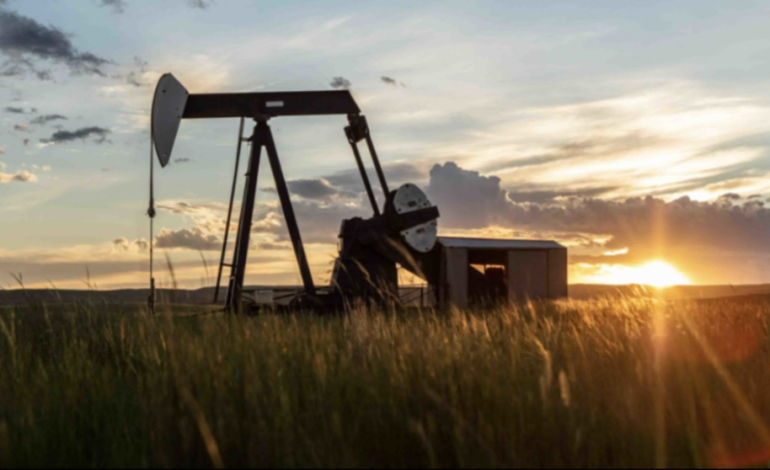Wyoming’s aging oil fields are receiving a significant boost thanks to advanced technologies aimed at enhancing oil recovery, Cowboy State Daily reports.
Through partnerships between the Enhanced Oil Recovery Institute (EORI) and private companies, these innovations are enabling the extraction of millions more barrels of oil from long-established wells, breathing new life into some of the state’s most depleted reserves.
One of the most striking examples of this technology in action is the transformation of the Beaver Creek oil field, located 12 miles south of Riverton. Once producing just 17 barrels a day after 70 years of operation, the field’s future seemed bleak, with projections suggesting a steady annual decline in output. However, after operators began injecting carbon dioxide (CO2) into the field in 2008, production soared. Within just a year, the field’s output spiked to 7,000 barrels per day, and over the next few years, it yielded an additional 15.3 million barrels — oil that would have otherwise remained trapped underground.
This success story highlights the potential of Enhanced Oil Recovery (EOR), a set of techniques that use injected gases like CO2 to pressurize reservoirs and force additional oil to the surface. In Wyoming, these methods have not only extended the life of legacy fields but also generated significant financial benefits. Over the past two decades, EOR has contributed an additional 67 million barrels of oil and approximately $558 million in state tax revenue, according to the State Budget Office.
“There’s a lot of interest in EOR,” said Lon Whitman, director of EORI, which was established in 2004 to promote these techniques.
The institute works with both public and private entities to maximize the potential of Wyoming’s oil fields, some of which are thought to contain over 2 billion barrels of latent oil.
However, while the benefits are clear, there are significant challenges in deploying EOR on a larger scale. One of the primary hurdles is the cost of acquiring CO2, a critical component of many EOR methods. The CO2 used in Wyoming’s operations is primarily sourced from the Shute Creek gas plant, located in the state’s southwest. This facility, the largest carbon capture facility in the world, supplies around 350 million cubic feet of CO2 daily to oil fields in Wyoming and Colorado.
The price of CO2 is closely tied to oil prices, which can make the process expensive. For instance, at the current rate of $61 per barrel of oil, the cost of 200 million cubic feet of CO2 needed for a field like Salt Creek would amount to approximately $244,000 per day. While the federal Q45 tax credit helps offset some of these costs, which provides $60 per ton of CO2 stored, the expense remains a significant barrier for operators looking to invest in EOR projects.
Another challenge lies in the high upfront costs of developing EOR infrastructure. For example, a Denver-based company pursuing a project near Gillette has estimated an initial investment of nearly $400 million, including costs for pipeline construction. These investments often require longer payback periods compared to other oil extraction methods, such as horizontal shale drilling, which provide quicker returns and are thus more appealing to investors.
Despite these challenges, the Wyoming state government has continued to support EOR initiatives, recognizing the long-term economic benefits. The Enhanced Oil Recovery Institute, with a biennium budget of $4.7 million, plays a key role in supporting project planning, geologic mapping, and technical services. Since its establishment, EORI’s collaborative projects have resulted in millions of barrels of additional production and a significant boost to state revenues.
Looking to the future, the next generation of EOR technologies may further reduce the need for costly infrastructure like pipelines. One such project, led by Texas-based ATR Partners in collaboration with EORI and the Wyoming Energy Authority, is testing a new “enriched air” recovery method. This technique uses a combination of oxygen and nitrogen gases to generate CO2 in the reservoir itself, pushing oil to the surface without requiring external CO2 injections. Expected to yield 4.8 million barrels from initial pilot wells, this innovation could potentially revolutionize the way EOR is implemented in areas lacking extensive pipeline networks.
Similarly, another project in the works by X Oil Development seeks to utilize Natural Gas Liquids (NGLs) for EOR. NGLs, which can be transported and reused, offer a flexible solution to stranded oil reserves and could be a game-changer for fields without access to CO2 pipelines.










The latest news in your social feeds
Subscribe to our social media platforms to stay tuned